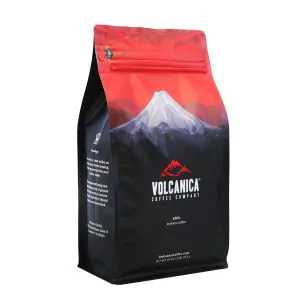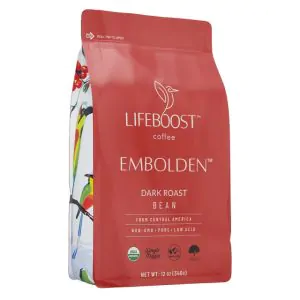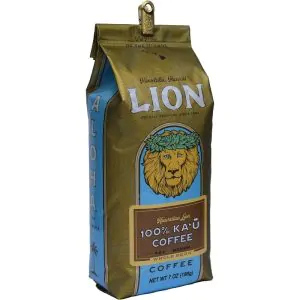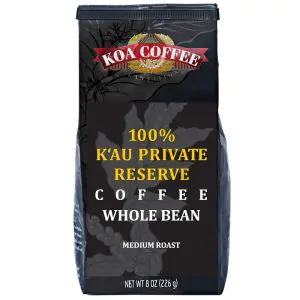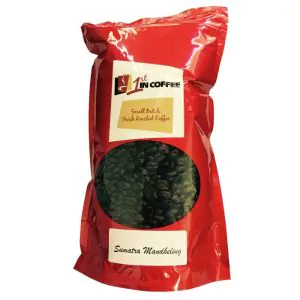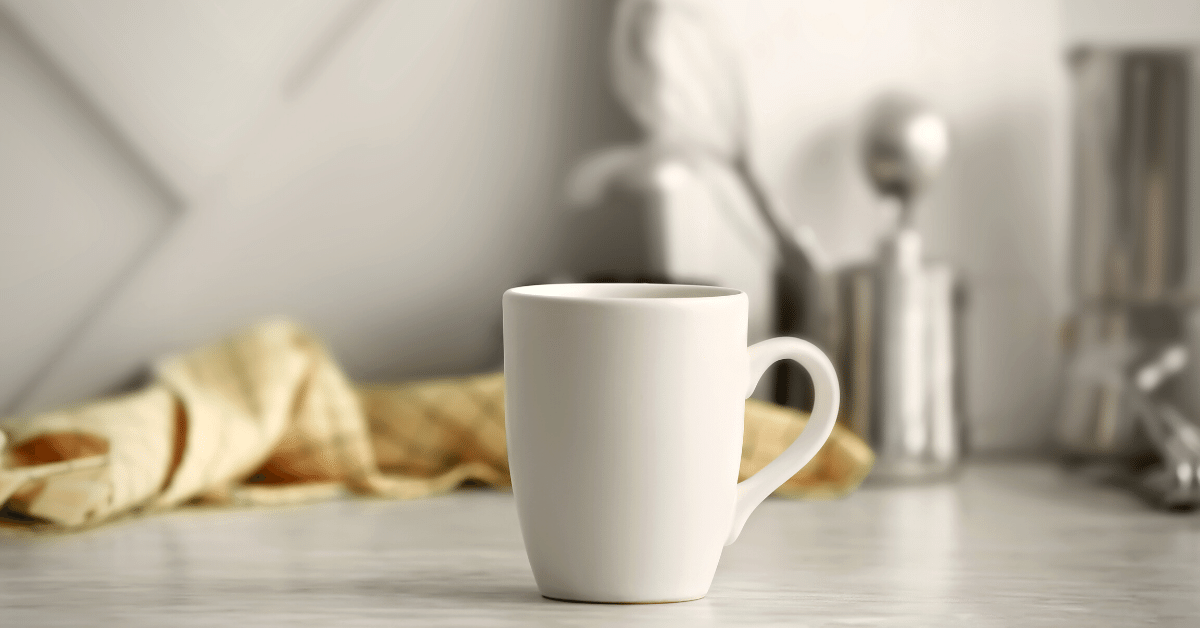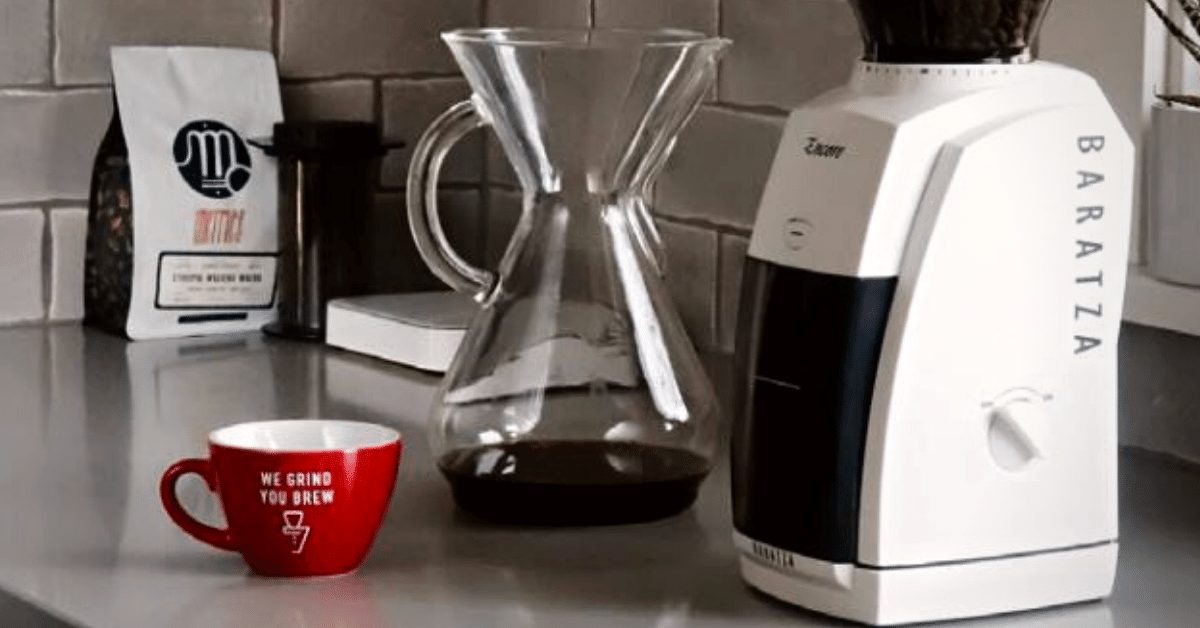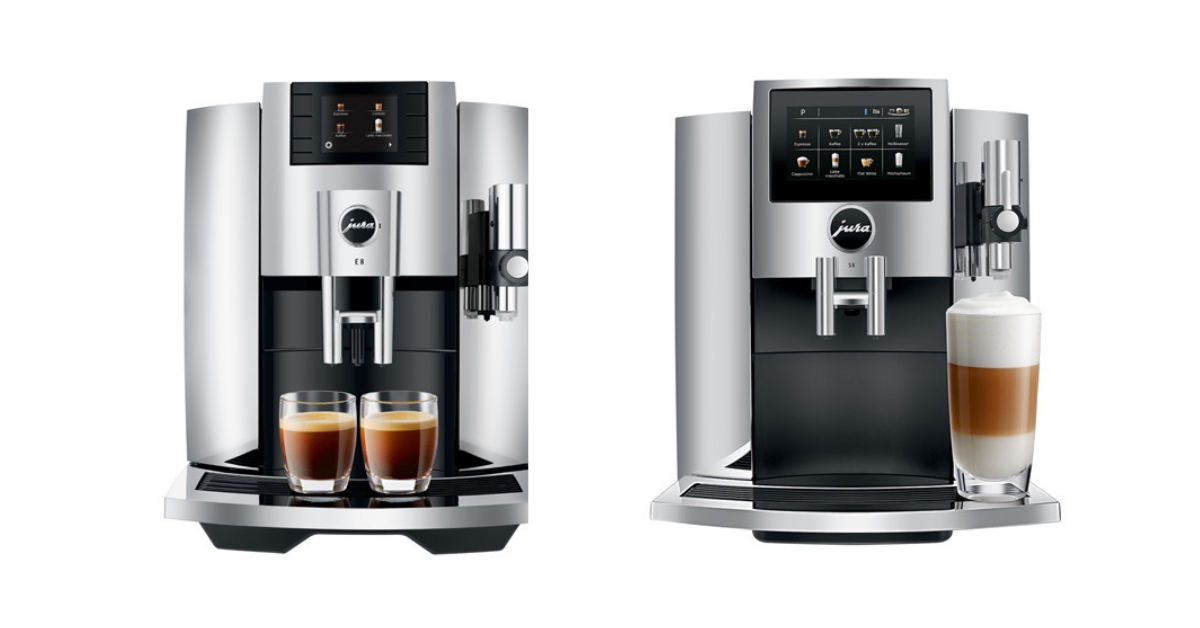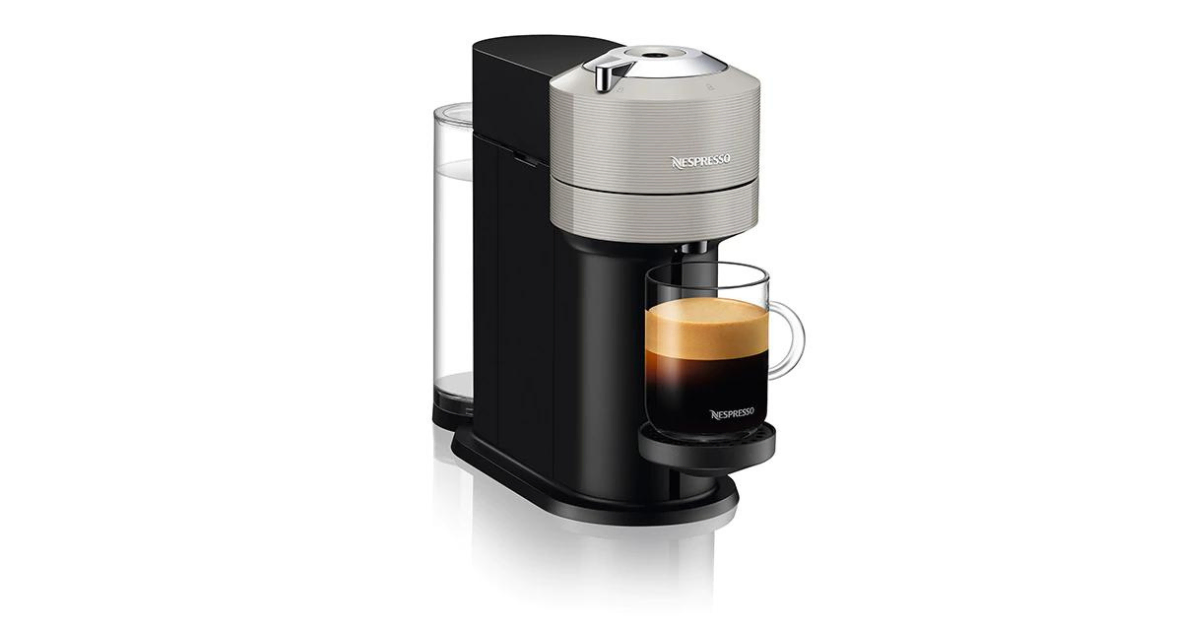In a hurry? Our top pick for the best low acid coffee is Lifeboost Biotics Cold Brew.
Have a sensitive stomach?
That’s not a reason to quit coffee.
Not when there are tons of products with low acidity you can switch to.
In this article, we’ll review the best low acid coffee options out there, and what to look for when choosing the best one.
Let’s get straight to the point.
Best Low Acid Coffee: Top 9 Picks
- Lifeboost Biotics Cold Brew (Best Overall)
- Volcanica Low Acid Coffee (Best Blend)
- Puroast Low Acid Ground Coffee (Affordable Pick)
- Mommee Coffee Decaf Ground Low Acid Coffee (Best Decaf)
- Lifeboost Embolden Dark Roast (Best Dark Roast)
- Hawaiian Lion 100% Ka’u Coffee (Best Single Origin)
- Koa Coffee Private Reserve Medium Roast Whole Bean 100% Ka’u Coffee (Best Medium Roast)
- 1st In Coffee Sumatra Mandheling Whole Beans (Best Alternative Flavor)
- Tieman’s Fusion Coffee Low Acid Dark Roast (Best Fusion Coffee)
Lifeboost Biotics Cold Brew
Lifeboost is already known as one of the best low acid coffee brands. Among its product line, the Biotics Cold Brew stands out the most.
For this single-origin Lifeboost coffee, the brand uses Arabica variety grown at 5700 feet, deep into the Nicaraguan rainforests. Out there, the soil is practically untouched, with river waters rich in minerals.
And thanks to the thick canopy made of guava trees, the coffee plants grow in thick shade. As a result, the beans ripen at a slower rate, causing the flavor to be more intense. And not just that, but shade-grown coffee is much more sustainable to grow.
Designated for making cold brew, this coffee is coarsely ground. It’s medium roasted, so you get a full-bodied and bright cup with notes of raw sugar and black tea. The caramel aftertaste makes this coffee pair exceptionally well with milk.
This high-quality coffee does come with a high price tag. But to be honest, I believe the price is well justified. And if you opt for subscription delivery, you can save up to 30% that way. Plus, you get a fresh batch to your doorstep on a regular basis.
Pros
- The flavor profile of this cold brew coffee goes well with milk or creamer
- Grown in the shade and at high altitude, the coffee beans are more intense and flavorful
- The coffee is tested mycotoxin and pesticide-free
- It’s roasted on a weekly basis, so you always get fresh coffee
Cons
- Relatively expensive compared to other coffee on this list
Volcanica Low Acid Coffee
As a brand, Volcanica is committed to using only high-quality beans grown in volcanic soils. Why does it matter? Well, because the volcanic soil is rich in minerals that give the coffee a wonderful aroma and intense flavor.
In the case of this blend, Arabica varieties from Brazil and Sumatra are used. Grown at low altitudes, these beans are naturally low in acidity. That’s why this blend is naturally gentle on your stomach.
Medium roasted, this Volcanica coffee makes a well-balanced cup of coffee with flavor notes of nuts, chocolate, and tangerine.
But while initially intense, this coffee loses strength relatively quickly. For that reason, you don’t want to order a bag larger than your weekly amount of coffee.
Luckily, the brand sells this coffee in packaging ranging from 16 ounces to 5 pounds. You can also subscribe to have it delivered every few weeks, directly to your doors.
You can buy this coffee as whole beans or preground coffee, depending on whether you have a grinder at home or not. In the case of the latter, you can choose between drip, French press, and espresso grind size.
Pros
- Comes in the packaging of 16 ounces, 3 and 5-pound bags
- Kosher-certified, meaning people with religious dietary restrictions can enjoy it
- You can get it as whole beans or preground coffee, depending on whether you own a grinder
- The subscription option delivers coffee to your door on a schedule
Cons
- The coffee loses strength quickly once you open the packaging
Puroast Low Acid Ground Coffee
This Puroast low acid coffee is as gentle as it gets on your stomach. Aside from using beans that have a naturally low acid level, the brand also uses proprietary roasting technology to lower acidity by 70%.
So even if you’re extremely concerned about your digestive health, you can drink this coffee without experiencing issues.
The brand keeps the roasting technology a secret, so we don’t know exactly what they do to make coffee bean low in acidity. Furthermore, they also do something to make coffee rich in antioxidants, up to 7 times more than green tea.
This coffee is sold as preground, with particle size suitable for the drip method. If you like to brew your coffee with different methods and experiment with grind size, then you will need to search elsewhere.
Now, many customers claim this coffee has a slightly diluted flavor. But you can fix that by adding more grounds when brewing.
On another note, this coffee is quite affordable. So even if you use more grounds per cup, you still won’t break the budget with this coffee.
It’s worth noting that this is certified organic coffee and Climate Pledge friendly. This means it’s produced under strict standards and with sustainability in mind.
Pros
- Sold in small bags of 12 ounces, so it won’t go stale before you finish the whole bag
- Comes preground, so you don’t need a grinder at home to use this coffee
- Organic and Climate Pledge certification ensures this coffee is grown following rigorous standards
- Very affordable compared to other picks on this list
Cons
- Mild flavor, so you might need to add more grounds per cup
- Sold as pre-ground, so you are limited with brewing method options
Mommee Coffee Decaf Ground Low Acid Coffee
Chlorogenic acid, which coffee is high in, is the compound responsible for acid reflux, heartburn, and GERD. And while anyone can be sensitive to these issues, new and expecting moms are at a higher risk than others.
But there’s no need for moms to quit coffee completely. Mommee low acid decaf coffee is 5 times lower in acid compared to regular coffee.
By roasting coffee to medium, about 60% of chlorogenic acid gets destroyed. And since this is decaf coffee, it goes through an additional process that further lowers the coffee acid.
True, the natural decaf process is more expensive, hence the high price tag of this coffee. But it’s all well justified.
Made with Arabica beans, this coffee creates a smooth and creamy cup of coffee. It features notes of milk chocolate and caramel, followed by a tropical aftertaste.
The coffee is medium ground, making it suitable for drip and pour-over methods. Unfortunately, this means you can’t use it for any other method, such as espresso.
Pros
- The roasting and decaffeination processes destroy 60% chlorogenic acid, responsible for digestive issues
- The sweet and buttery flavor profile makes this coffee pair well with milk, creamer, and sugar
- Packed in releasable pouches with a one-way valve, coffee stays fresh while unopened
- Aside from decaf, this coffee has quarter, half, and fully caffeinated version
Cons
- Slightly expensive due to the costly decaffeination process
- It’s pre-ground in medium size, so you can only use it for drip and pour-over methods
Lifeboost Embolden Dark Roast
Lifeboost never misses when it comes to low acidic coffee. And this dark roast coffee is no different.
This low acid coffee brand only uses single-origin coffee, grown at a high altitude under shade. To further ensure the beans are top quality, they’re hand-picked, sun-dried, and washed with spring water.
This Lifeboost coffee is roasted to a medium dark level, somewhere between French and Italian roast. These beans create a heavy-bodied cup with a slight dryness contrasting its sweetness. It’s robust, with notes of cacao and chocolate.
Since it’s so dark-roasted, it’s no surprise this coffee is low in acid. But what’s surprising is that it’s not bitter at all. It’s rather sweet, although that’s balanced out with other notes.
Like any Lifeboost coffee, Dark Roast can be bought as whole beans or preground coffee. But, there’s an additional option – go bags. Steeped then nitrogen-sealed for freshness, the go bags are extremely practical when you’re on the go.
Lifeboost is a premium coffee brand, so its coffee comes with a premium price tag. If you are on a budget, this coffee is not for you.
Pros
- Sold as beans, pre-ground coffee, or steeped bags, so you can pick whichever is more convenient for you
- Oxygen-sealed with a one-way valve, so coffee remains fresh while unopened
- With a subscription plan, you’ll have a fresh batch delivered to you on schedule
- Tested free from mycotoxins, heavy metals pesticides
Cons
- Quite expensive compared to most products on this list
Hawaiian Lion 100% Ka’u Coffee
For the most part, low acidity coffee is achieved by using beans that are naturally low in acidity. One such coffee plant is Ka’u, a cousin to the better-known Kona coffee. For that reason, Ka’u is a good option for those experiencing digestive problems from drinking coffee.
Grown next door to the Kona farms, on the same volcanic soil, Ka’u coffee delivers similar characteristics. These include a lightly sweet and fruity flavor profile.
But what makes it distinctive are notes of brown sugar and currant. What’s more, there’s no crisp finish that you get with Kona.
It doesn’t go well with milk because it’s already creamy. So if you like sipping lattes, this coffee is probably not for you.
Considering it’s a single origin, this coffee is on a slightly more expensive side. But given its unique flavor profile, the price tag is justified. This coffee is sold in small 7-ounce bags, so it won’t go stale before you go through the entire packaging.
I like that you can choose between whole beans and ground coffee. If you own a grinder, you get a more flavorful cup by grinding the beans right before brewing. But if you don’t, you can order preground that’s ready to use straight from the bag.
Pros
- Single origin, so you feel unique and distinctive notes in your cup
- You can choose between whole beans and preground coffee
- A small packaging means you’ll finish the bag before the coffee goes stale
- This coffee is naturally sweet, so you don’t need to add sugar to it
Cons
- Doesn’t go well with milk
Koa Coffee Private Reserve Medium Roast Whole Bean 100% Ka’u Coffee
Hawaiian coffee is bright and smooth, with a syrupy mouthfeel and low acidity. Ka’u varietal, a Bourbon hybrid, is a perfect example.
Grown on the south side of the Hawaiian big island, this coffee is intense and flavorful. But even though it’s grown at high altitudes, this coffee variety is low in acidity.
And when roasted to a medium level, a good portion of chlorogenic acid is destroyed, making it even less acidic. For that reason, this is a great choice for anyone dealing with gastrointestinal issues.
This specific Ka’u coffee by Koa Coffee has a noticeable hint of jasmine, along with the classic notes of brown sugar and currant. It creates a well-balanced cup of coffee that’s rich and sweet.
The fruity flavor profile doesn’t pair well with milk or creamer. But since it’s already full-bodied, I don’t find it necessary to add anything to your cup. Well, unless you are a die-hard latte fan, then it’s a bummer.
I like that this coffee is sold as whole beans, so you can grind it at home. That way, you always have a fresh cup of coffee. What’s more, you can grind it at different coarseness levels, for different brewing methods.
Pros
- Grown in volcanic soil, the coffee is intense and mineralized
- It’s naturally sweet, so there’s no need to add sugar or sweetener
- Packed in 8-ounce bags, so you finish the bag before it goes stale
- Sold as either preground or whole bean coffee, depending on your preference
Cons
- The fruity flavor profile doesn’t pair well with milk
1st In Coffee Sumatra Mandheling Whole Beans
Ever heard of Sumatra Mandheling? That’s an exotic variety grown in the volcanic soil of Indonesia. This coffee variety is known for its asymmetrical bean shape and deep aquamarine tint.
The tint is believed to be a byproduct of the processing method, as well as the earthy, pungent flavor profile.
Mandheling is very complex and exotic, with hints of toffee nut and wood, and a hibiscus finish. These notes are even more prominent when coffee is roasted to the dark level.
This coffee can be a bit too bold for casual drinkers, so I wouldn’t recommend it if you like a smooth cup of joe. But for coffee enthusiasts, it can be quite a refreshing change in flavor.
While it’s grown at high altitudes, the roasting process destroys most of the chlorogenic acid, making this coffee low in acidity.
Thanks to the one-way release valve, the beans degas without letting oxygen in. The coffee is sold in small bags of 8 ounces, meaning you’ll finish it before the beans go stale.
But if you drink a bunch of coffee on a regular basis, you can also order a bag of 5 pounds. By buying in bulk, you also save up some money.
Pros
- Single-origin coffee allows unique notes to be distinguishable in a cup
- You can order in 8-ounce and 5-pound bags, depending on how much coffee you consume
- This dark roast is sweet enough without the addition of artificial sweeteners
- A one-way valve allows beans to degas while preventing oxygen from coming in
Cons
- The complex flavor profile might be too bold for casual coffee drinker
Tieman’s Fusion Coffee Low Acid Dark Roast
If you’re somehow bored of plain coffee, try this product by Tieman’s Fusion Coffee. Aside from Arabica beans grown in Guatemala, Ecuador, and Colombia, this blend features a few other ingredients.
First is the Matcha green tea, which boosts your energy for many hours, without consuming too much caffeine. That’s great for morning, although not suitable for afternoon coffee.
Then you have the Rooibos red tea, which settles your stomach. Finally, the Goji berry powder has tons of anti-inflammatory benefits.
Together, these ingredients make this Tieman’s Fusion Coffee an antioxidant bomb that is not just delicious, but very healthy as well.
But just because it has tons of nice things added to it, that doesn’t mean this coffee doesn’t taste like real coffee. It’s smooth and flavorful like any dark roast, but without the bitterness that you might get with other blends.
This coffee is sold in the packaging of 8 ounces. You can order it as preground or as whole beans, depending on whether you can grind it at home.
Pros
- The addition of Matcha gives you a long-lasting energy kick without consuming a high amount of caffeine
- Rooibos red tea and Goji berry powder have a calming effect on your gastrointestinal system
- Contains 5 times the daily amount of antioxidants
- Sold as either preground coffee or whole beans, depending on whether you own a grinder
Cons
- Very energizing, so it’s not suitable to consume later during the day
Things to Consider When Buying Low Acid Coffee – A Buyer’s Guide
Narrowing down your search to the low acid coffee bean doesn’t mean settling for plain options. There are tons of different low acid products that are more or less worth your attention. Here’s what to pay attention to in order to find the best low-acid coffee that won’t raise your stomach acid and make you nauseous.
Beans
There’s no cool processing method that destroys coffee acidity. Some beans are simply less acidic than others.
Generally, Arabica coffee is lower in acidity compared to Robusta.
But there are tons of Arabica varieties out there, and they all have different acidity levels. But generally, what defines how acidic coffee turns out to be is the altitude.
Coffee plants grown at higher altitudes tend to grow beans with more accentuated flavor. They’re brighter, spicier, and – more acidic.
Beans grown at lower altitudes are naturally lower in acidity. Some of the popular low-elevation regions are:
- Brasil
- Indonesia
- Nicaragua
- Peru
Roast
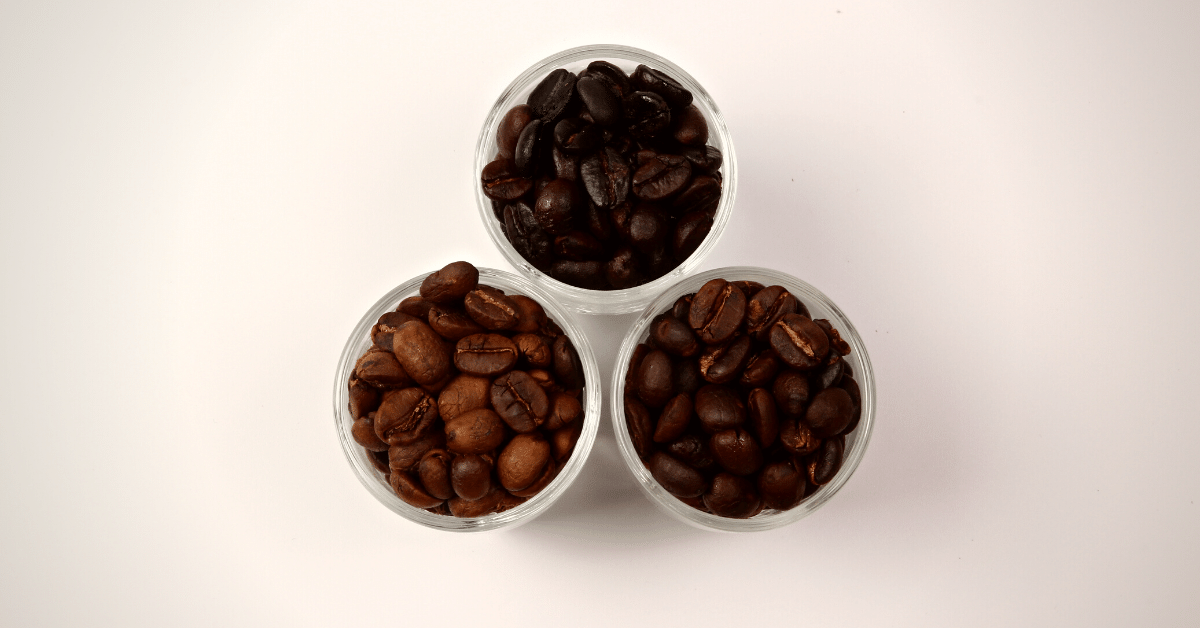
While acidity doesn’t actually dissipate through the roasting process, it gets less prominent as beans are roasted. Therefore, the darker the roast, the less acidity will be found in your cup of joe.
Light roast coffee is the most acidic.
But since the acidity depends a lot on the bean variety, as we mentioned earlier, you can find low acid coffee in all types of roasts.
With lighter roasts, you can easily differentiate the unique flavors a specific soil gives to beans. More complex notes, such as fruity and flowery hints, will be easily distinguishable.
Medium roast is bright, but with a more caramel finish and a rounder flavor profile.
As for the dark roast, it can be rather bold and full-bodied, with chocolaty and nutty hints and a bitter aftertaste.
Brewing Method
Did you know that acidity levels and brewing time are in an inverse relationship? The longer coffee it’s brewed, the lower it is in acidity.
This is something to consider when buying low acid coffee. Because it brews the longest, cold brew is the least acidic type of coffee drink out there. If that’s your preferred method, then any low acidic coffee will do.
With shorter brewing lengths, you should look for more flavorful coffees, as they need to be extracted in such a short amount of time.
Final Verdict
If you have a sensitive stomach, the best coffee for you is low-acid coffee.
Luckily, there are some great options out there. And among them, the best is the Lifeboost Biotics Cold Brew.
It’s bright, intense, and pairs well with milk. But since it’s rather sweet, it’s very delicious on its own.
It’s also roasted in small batches and shipped weekly, so you always drink only the freshest coffee possible!



